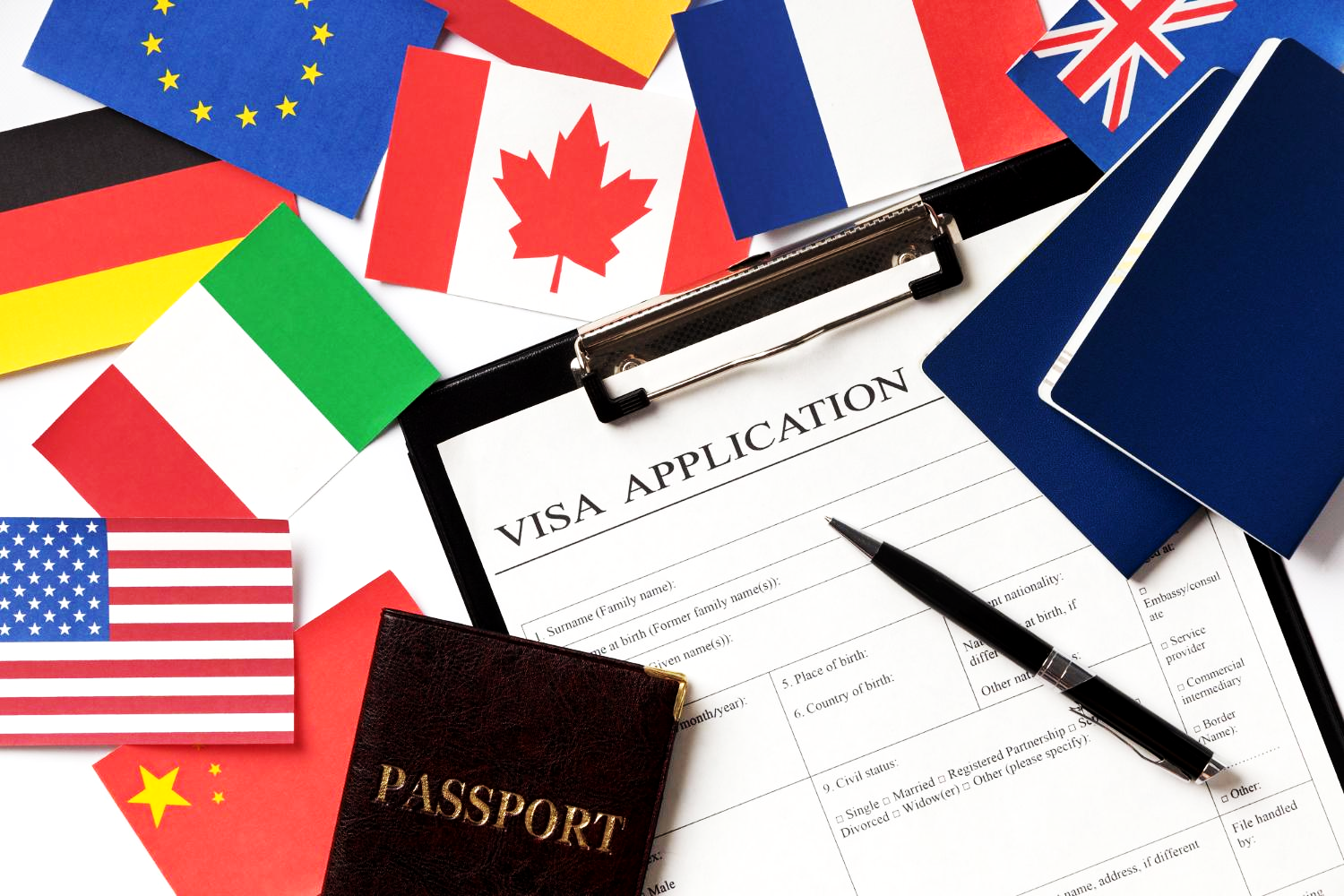Pension Plans for Expats in Europe: How to Secure Your Future

When Maria moved from Chicago to Paris for her dream job, she was living her best life; croissants, culture, career. Every day felt like a postcard came to life, and retirement was the last thing on her mind.
But ten years later, over coffee with a friend, the conversation turned to pensions. Her friend mentioned her retirement plan, and Maria laughed: “Do I even have one here?”. That laugh faded as she realized she had no idea how her years in Europe would shape her financial future.
That small moment of uncertainty is one many expats share. We cross borders chasing opportunity and adventure, but often forget to plan for the years ahead. Because securing your future isn’t just about saving money, it’s about creating the freedom to keep living the life you love, no matter where you are.
Let’s get real: why this matters
Working and retiring across multiple European countries can be rewarding, but it’s not simple. Each country has its own pension system, contribution rules, and tax framework. While the EU guarantees coordination, there’s no true harmonization.
That means expats must actively manage how their pension rights accumulate, transfer, and eventually pay out. Otherwise, years of hard work could result in fragmented benefits or unexpected tax bills.
Subtasks to start now:
1. Map your career journey: List all the countries where you’ve lived and worked, including employment dates.
2. Check coordination coverage: Within the EU/EEA/Switzerland, Regulation (EC) No 883/2004 ensures your social security contributions can be aggregated to meet eligibility.
3. Identify bilateral treaties: If you’ve worked outside this area, check if your home country has a social security agreement with your host country.
4. Track short-term jobs: If you worked less than a year in a country, that state won’t pay a pension, but those months still count toward your total record elsewhere.
Understanding these rules early helps prevent lost years, missing records, and stressful surprises later.
Understanding your pension options
Europe’s pension framework is built on three pillars. Think of them as layers of your financial foundation, each serving a unique role in your long-term security.
Pillar 1 – State (Public) Pensions
Your first safety net. These pensions are funded by mandatory contributions and coordinated through EU Regulation 883/2004. The good news? Every year you work in an EU/EEA or Swiss country counts toward your total eligibility.
– Check your rights: Contact each national pension authority to verify contribution years.
– Pro-rata payments: Each country pays a portion based on how long you worked there. For instance, if you worked 10 years in Germany and 15 in France, each pays its share separately when you reach their retirement ages.
– Exportability: You can receive these pensions wherever you live in the EU/EEA/Switzerland.
– Example: The Dutch AOW system offers 2% of a full pension per year lived or worked in the Netherlands between ages 15–67 — but you can voluntarily pay to fill gaps while abroad.
Pillar 2 – Occupational (Workplace) Pensions
Your second pillar is employer-based, and here’s where it gets trickier. The EU Portability Directive (2014) protects your rights, but transferability remains limited.
– Confirm vesting: Pension rights must vest after a maximum of 3 years of employment.
– Keep documentation: Store all pension certificates from past employers; these prove your preserved rights.
– Defined Contribution (DC) plans are easier for mobile workers to manage, funds are individual and portable.
– Defined Benefit (DB) plans promise fixed income but are hard to transfer across borders.
Tip: Many expats end up with several “frozen” workplace pensions across Europe. Consolidate your records early to simplify future management.
Pillar 3 – Personal or Voluntary Pensions
Your third pillar is where freedom lives, the savings and investments you control directly.
The Pan-European Personal Pension Product (PEPP) was designed for people like you: mobile, international, and independent. It allows saving across borders through standardized national “sub-accounts.”
However, tax treatment still varies between EU countries, and not all Member States grant PEPPs the same tax breaks.
What You Can Do:
– Explore PEPPs if you move often between EU states.
– Compared with local private pension schemes; in some countries, national products still offer better tax relief.
– Watch for the upcoming “hybrid PEPP” reform, which will allow employer contributions, this could make PEPPs more powerful and cost-effective.
Private Pension / Expat-Friendly Providers by Country
To help you get started, below are some of the most popular private pension savings and planning providers for expats in key European countries. These firms offer voluntary/private pension solutions — not tied to your industry CLA — so you can see what your options are beyond state or workplace schemes.
| Country | Private Pension Type (Local Name) | Well-Known/Private Providers | Expat-Friendly Advisor/Broker | Key Features for Expats |
| Germany | Riester-Rente / Rürup-Rente (Basis-Rente) / Private Pension Insurance | Allianz AXA Generali Zurich R+V Versicherung Getsafe PensionFriend | Blacktower FM, Schlemann & Partners, MW Expat, FinanceForExpats.de | Tax deductible contributions up to €29,344/year (Rürup). Government bonuses (Riester). No geographic restrictions for expats. |
| France | Assurance Vie / PER (Plan d’Épargne Retraite) | AXA Generali Allianz Crédit Agricole BNP Paribas Société Générale Natixis | Spectrum IFA, Harrison Brook, Blacktower FM, Blevins Franks | Tax-free growth after 8 years. Inheritance benefits. Suitable for French tax residents. €4,600/€9,200 annual allowance. |
| Spain | PPP (Plan de Pensiones Privado) / FPV (Fondo de Pensiones Voluntario) | Banco Santander BBVA Mapfre Mutua Madrileña Vida Caixa | Spectrum IFA, Blacktower FM, Titan Wealth International | Tax deductible up to €8,000/year. Flexible withdrawal options. Limited providers for expats. Complex taxation. |
| Netherlands | Private Pension (Lijfrente) / Pensioenrekening | BrandNewDay PGGM ASR NN Group Aegon Nationale-Nederlanden | Expat Pension Holland, Stad Financial Management, Viisi Expats | Tax deductible up to €35,798/year. Portable within EU/EEA. Limited access when moving outside EU. |
| UK | SIPP (Self-Invested Personal Pension) / International SIPP | AJ Bell Hargreaves Lansdown Interactive Investor Fidelity Vanguard iWeb Transact | Titan Wealth International, Chase Buchanan, SJB Global, MyExpatSIPP | Flexible investment options. 25% tax-free lump sum from age 55. Multi-currency capability. FCA regulated. |
| Switzerland | Pillar 3a (Tied Pension) / Pillar 3b (Free Pension) | Swiss Life Zurich AXA Baloise Generali Helvetia Vaudoise | Expat Services Switzerland, Assurance Genevoise, Simple Care | Tax deductible up to CHF 7,258/year (employees). Withdrawable 5 years before retirement. Portable globally. |
| Italy | PIP (Piano Individuale Pensionistico) / FPA (Fondi Pensione Aperto) | Generali Allianz AXA Intesa Sanpaolo Vita Fideuram Poste Vita | Finance for Expats EU, Spectrum IFA, Valiant Wealth | Limited tax benefits. High fees. Inflexible products. Better suited for Italian tax residents only. |
| Portugal | PPR (Plano Poupança Reforma) / Open Pension Funds | BPI Vida e Pensões Fidelidade Tranquilidade BBVA Seguros Millennium BCP CGD Seguros | Blacktower FM, Titan Wealth International, Portugal Pathways | Tax deductible up to €400/year. PPR funds widely available. Limited international portability. |
| Sweden | Tjänstepension (Occupational Pension) / Private Pension Insurance | Alecta AMF Folksam SEB Handelsbanken Swedbank Länsförsäkringar | Söderberg & Partners, Nordea Private Banking, SEB | Strong occupational schemes. Limited private options for expats. Guarantee pension only for residents. |
| Belgium | Pension Savings Insurance / Private Pension Plans | AG Insurance Ethias KBC Belfius ING Belgium AXA Belgium | Chase Buchanan, Howden Belgium, Spectrum IFA, Blevins Franks | Tax relief 25-30%. Annual limit €1,350. Immediate entry to workplace schemes. Limited international portability. |
How to plan effectively
Even with EU coordination, expat pension planning needs structure. Use the table below as your personal action roadmap, a clear guide to protect, optimize, and grow your cross-border retirement savings.
| Action Step | What to Do | Why It Matters | Key Tips & Tools |
| 1. Create a Pension Tracker | Record all your Pillar 1, 2, and 3 pensions — including country, provider, contribution years, and expected retirement age. | Keeps your entitlements organized and prevents lost contributions. | Use a spreadsheet or pension-tracking app. Add reminders for annual updates. |
| 2. Consult an International Advisor | Choose a financial planner familiar with EU Regulation 883/2004, Portability Directive (2014), and Double Taxation Treaties (DTTs). | Cross-border pension law is complex; expert advice can prevent errors or tax losses. | Ask about their experience with expat clients and multi-country coordination. |
| 3. Understand Pension Taxation | Learn how each country taxes pensions. Generally: private pensions = residence-based; public pensions = source-based. | Prevents double taxation and ensures compliance. | Check national tax authority sites or the EU “Your Europe” portal. |
| 4. Avoid Double Taxation | Use DTTs between your home and host countries to determine which can tax your pension. Claim tax credits or exemptions where available. | Ensures you don’t pay tax twice on the same income. | Review tax clauses for private, public, and lump-sum pensions separately. |
| 5. For UK Expats – Use QROPS | Transfer UK pension assets only to Qualifying Recognised Overseas Pension Schemes (QROPS). | Avoids the 25% Overseas Transfer Charge (OTC) and ensures compliance with HMRC. | Stay in the EEA or Gibraltar for at least 5 years post-transfer to maintain exemptions. |
| 6. Diversify and Supplement | Combine formal pensions with voluntary savings, investments, or PEPP accounts for flexibility. | Offsets inflation and currency risks; builds financial independence. | Explore Pan-European Personal Pension Products or local tax-advantaged plans. |
| 7. Review Annually | Revisit your pension data, legal status, and tax residency every 12 months. | Laws, retirement ages, and treaties change regularly. | Set a calendar reminder each year; schedule a financial review with your advisor. |
By mapping your contributions, understanding EU and bilateral rules, and using flexible personal savings like PEPPs or QROPS, you can turn a complex system into a clear, empowering roadmap for your future.
Take charge of your tomorrow
We understand that cross-border pension planning can feel overwhelming; different laws, shifting tax rules, and systems that don’t always speak the same language. That’s exactly where Coach4Expats comes in. Our mission is to help international professionals like you cut through the complexity of Europe’s pension landscape. From mapping your state, occupational, and personal entitlements to creating a tailored strategy that safeguards your wealth, we make sure your future feels as secure as the life you’re building today.
Need help negotiating your contract or understanding your labour market rights? At Coach4Expats, we also offer a Contract & Labour-Market Review Service: we analyze your employment terms, pension contribution clauses, social security rights, and ensure your contract puts you in the strongest financial position. Don’t leave these details to chance. Contact us today!
Take a look at our
job search services👇
Coach4expats understands the unique challenges of finding work opportunities abroad and we are here to make the process smoother and more successful for you. Our comprehensive suite of services is designed to guide you through every step of your job search and relocation, including:
Whether you’re seeking personalized advice, access to industry insights, or a supportive network, Coach4expats is here to ensure your relocation experience is a stepping stone to your brightest future.
Contact us and start your journey with us today!
Doubts or questions?
Contact us now! 👇
Related Reads: Check out these other Articles!
2025 Europe Travel Changes: What Expats Need to Know About
Europe Travel Changes: What Expats Need to Know About the New Digital Border System There are moments in life when a…
Understanding Employment Contracts in the Netherlands: A Complete Guide
Understanding Employment Contracts in the Netherlands: A Complete Guide Starting a new job is always a mix of excitement and nerves,…
Tired of Job Applications? Try Reverse Hiring and Get Noticed
Tired of Job Applications? Try Reverse Hiring and Get Noticed by Employers Abroad Perhaps this situation sounds familiar: sitting in front…
Expat or Digital Nomad? Key Differences to Know Before Moving
Expat or Digital Nomad? Key Differences to Know Before Moving Abroad in 2026 Confused between becoming a digital nomad or an…
Global Mobility Trends 2026: Affordable, Welcoming Places to Live
Global Mobility Trends 2026: Affordable, Welcoming Places to Live When the Nguyens touched down in Auckland on a crisp autumn morning,…
Freelancing in Europe as an Expat: Your Guide to Legal
Freelancing in Europe as an Expat: Your Guide to Legal Steps, Taxes & Thriving Abroad Freelancing abroad sounds like freedom, doesn’t…
Visa & Work Permit types for Non-Tech Expats: How to
Visa & Work Permit types for Non-Tech Expats: How to get a job when you don’t work in IT You’ve heard…
Minimum Salaries Around the World: A Global Review 2025
Minimum Salaries Around the World: A Global Review 2025 In today’s volatile and rapidly transforming global economy, the question of what…
Which EU Countries Are Making It Easier for Expats to
Which EU Countries Are Making It Easier for Expats to Move in 2025? This article is your guide to the countries…
Remote Jobs in Europe for Non-EU Citizens: Your 2025 Resources
Remote Jobs in Europe for Non-EU Citizens: Your 2025 Resources Guide By 2025, remote work is no longer a trend in…

















